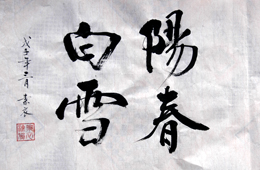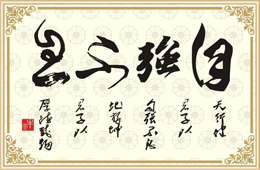| |
Chinese was learned and composed as a special language. It may originally have rather closely represented the way people spoke, but with time the spoken and written languages diverged rather strongly. The written language, called "classical Chinese" or "literary Chinese", is much more concise than spoken Chinese, the main reason being that a single written character is often just what one wants to communicate yet its single syllable would communicate an ambiguous meaning if spoken because of the huge number of homonyms. For instance, Òí (y¨¬, wing) is unambiguous in written Chinese but would be lost among its more than 75 homonyms in spoken Chinese.
.
Chinese calligraphy (Brush calligraphy) is an art unique to Asian cultures. Shu (calligraphy), Hua (painting), Qin (a string musical instrument), and Qi (a strategic boardgame) are the four basic skills and disciplines of the Chinese literati.
Regarded as the most abstract and sublime form of art in Chinese culture, "Shu Fa" (calligraphy) is often thought to be most revealing of one's personality. During the imperial era, calligraphy was used as an important criterion for selection of executives to the Imperial court. Unlike other visual art techniques, all calligraphy strokes are permanent and incorrigible, demanding careful planning and confident execution. Such are the skills required for an administrator / executive. While one has to conform to the defined structure of words, the expression can be extremely creative. To exercise humanistic imagination and touch under the faceless laws and regulations is also a virtue well appreciated
>
|
|






